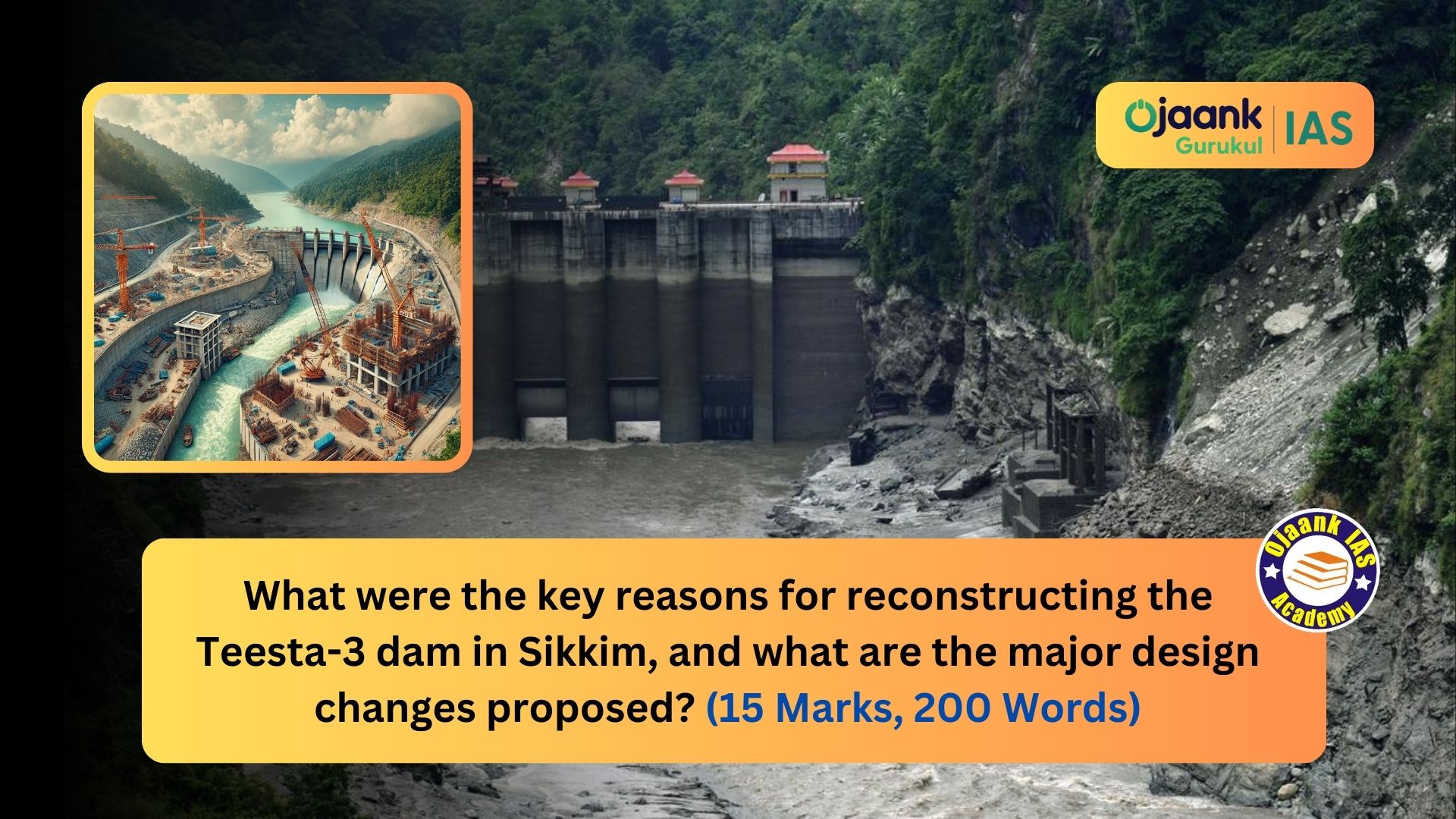What were the key reasons for reconstructing the Teesta-3 dam in Sikkim, and what are the major design changes proposed? (15 Marks, 200 Words)

Teesta-3 Dam Reconstruction in Sikkim: Reasons & Major Design Changes
The Teesta-3 Dam in Sikkim, a crucial hydropower project, was severely damaged by a glacial lake outburst flood (GLOF), leading to significant loss of life and infrastructure failure. This highlighted the need for reconstruction with a more resilient design.
Key Reasons for Reconstruction
1. Flood Damage
- The Teesta-3 dam was destroyed by a glacier lake outburst flood, resulting in the loss of over 100 lives.
- It highlighted the vulnerability of the existing rock-concrete dam structure
- According to the Central Water Commission (CWC), increasing climate risks demand stronger flood management strategies.
2. Hydropower Dependency
- As Sikkim’s largest hydropower project, it is crucial for the state’s energy infrastructure.
- The National Hydroelectric Power Corporation (NHPC) highlights Teesta-3 as a vital renewable energy source for India's clean energy transition.
3. Structural Failures
- The previous spillway could not manage large flood flows, causing severe downstream damage.
- Reports from The Hindu indicate that past failures could have been mitigated with better planning.
Major Design Changes in Teesta-3 Dam
✔ Complete Concrete Structure – The rock-concrete mix is being replaced with an all-concrete design to enhance durability.
✔ Enhanced Spillway Capacity – Upgraded to 19,946 m³/s from the previous 7,000 m³/s, improving flood resistance.
✔ Early Warning System – A new upper catchment early warning system will help detect flood risks in advance.
✔ "Worst-Case Scenario" Planning – Factoring in 100 years of predicted maximum rainfall for improved disaster resilience and aligning with IPCC climate change impact studies.
✔ Control Room Relocation – Moving to a higher elevation to ensure operational safety during floods.
Conclusion
The Teesta-3 Dam reconstruction focuses on strengthening flood resilience, improving disaster preparedness, and ensuring hydropower sustainability. These changes aim to prevent past failures while securing Sikkim’s energy future.
📢 What are your thoughts on the new design? Will it prevent future disasters? Share your views in the comments!